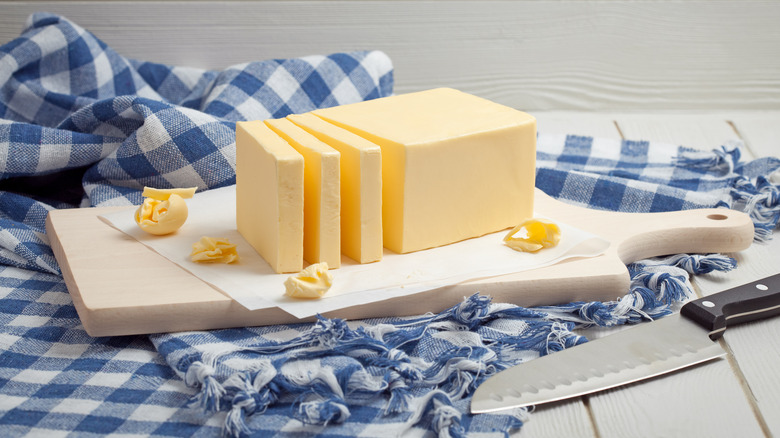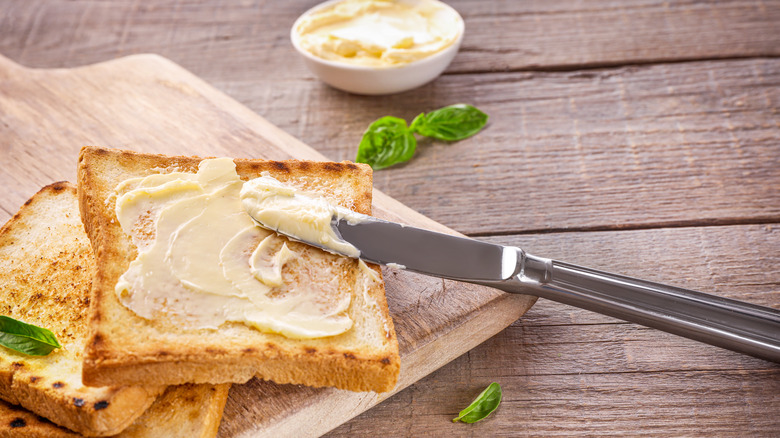What The Different Butter Grades Actually Mean
There's no denying that Americans really love their butter. The average American consumed about 5.6 pounds of butter in 2014, according to the Wall Street Journal. That's the equivalent of 22.5 sticks. But how much do you know about the butter you're slathering on your morning toast?
Not all butter is created equal. In fact, the United States Department of Agriculture (USDA) grades the dairy product on its consistency, quality, and flavor. There are three grades: U.S. Grade AA, U.S. Grade A, and U.S. Grade B. All three grades of butter must consist of at least 80% butterfat. The butter found in grocery stores is generally Grade AA or Grade A, while Grade B is more common in the industrial sector, according to Taste of Home.
How important is the grading when selecting your butter? It really depends on your personal preference and what you are using the butter for. Although all three grades of butter are suitable for spreading on a muffin or baked into a recipe, they do not all have the same quality of taste and texture.
A breakdown of the three butter grades
U.S. Grade AA is the highest quality of butter with the finest and best butter flavor, as defined by the USDA. It is made from sweet cream with a low natural acid. Grade AA butter is what you are most likely to find in the supermarket and, as King Arthur Baking Company notes, the best choice for cooking, baking, and at the dinner table.
U.S. Grade A is described as having a good butter flavor, but not to the same level as Grade AA. It can also have a slight acidic or bitter taste. As MasterClass notes, Grade A butter has a stronger flavor, a coarser texture, and is less spreadable than Grade AA.
U.S. Grade B, on the other hand, has the lowest mark for its butter flavor. It may have an acidic or bitter flavor, as well as a musky or malty flavor, per the USDA. According to MasterClass, it has less butter flavor than the other grades and can be crumbly or sticky in composition. As the National Dairy Council explains, Grade B butter is predominantly used in manufacturing.
Now that you know the difference between the butter grades, how do you know what type you are buying? It's simple: Look for the shield. Food items graded by the USDA includes a red, white, and blue shield with the awarded grade.

